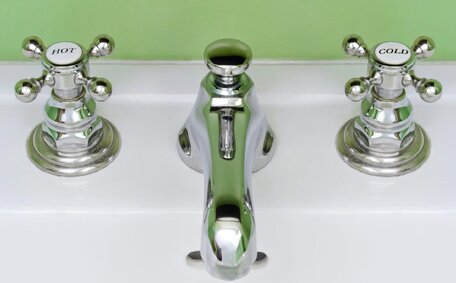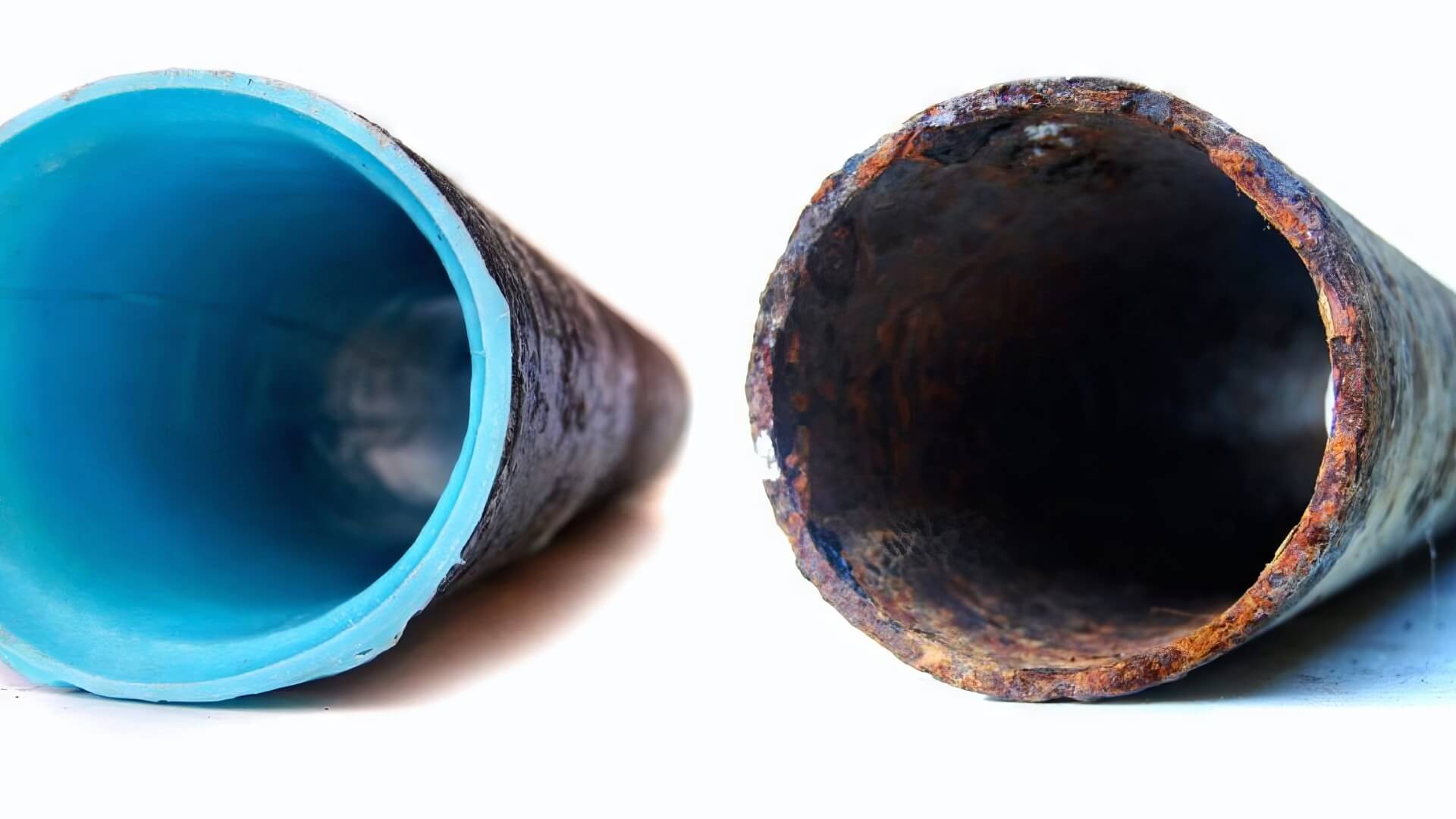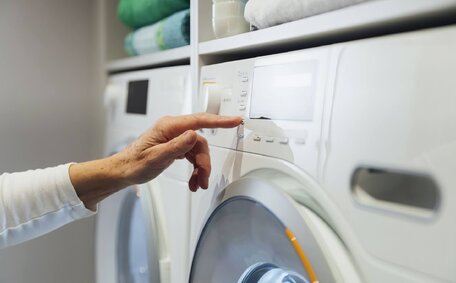Introduction to Baking Soda and Vinegar
Cleaning with these two familiar household ingredients, baking soda and vinegar, is often adopted as a natural cleaning solution. Individually, baking soda acts as a mild base and vinegar as a mild acid. When combined, they undergo a chemical reaction that produces carbon dioxide gas.
This fizzing reaction is why vinegar baking soda combinations have gained popularity as low-cost, non-toxic cleaners. However, there are some important aspects to understand about using them for cleaning purposes.
This article delves into the science behind the chemical properties of baking soda and vinegar. We’ll discuss their individual strengths as cleaning agents, what happens when you mix them, whether they’re effective for various cleaning jobs, and potential safety considerations.
Understanding the Chemical Reaction
When baking soda and vinegar are combined, a chemical reaction called neutralisation occurs. This is because baking soda is a mild base (sodium bicarbonate) and vinegar is a mild acid (acetic acid).
During the process, the hydrogen ions (H+) from the acetic acid vinegar react with the bicarbonate ions (HCO3-) from the baking soda. This produces carbon dioxide gas, water, and sodium acetate:
- Baking soda (sodium bicarbonate): NaHCO3
- Vinegar (acetic acid): CH3COOH
- Sodium acetate: CH3COONa
- Carbon dioxide: CO2
- Water: H2O
When baking soda and vinegar mix, they bubble and fizz as they form carbonic acid, releasing carbon dioxide gas. The resulting gas and water are inert byproducts of the reaction.
The primary cleaning action of the combined substances is the release of CO2 bubbles that help lift and dissolve debris.
It’s important to note that once the reaction finishes after a few minutes, there is no acid or base left, but the mixture can also be rinsed away easily. The end solution is neutral pH water that contains dissolved sodium acetate.
Acidity and Alkalinity
One could describe how to clean vinegar baking soda messes and how acidity and alkalinity refer to the pH level of a substance. pH is measured on a scale from 0 to 14, with 0 being the most acidic, 7 being neutral, and 14 being the most alkaline or basic.
Vinegar, being one of these two ingredients alongside baking soda, is acidic with a pH around 2-3. This acidity comes from acetic acid, which gives vinegar its sour taste and ability to dissolve hard water mineral deposits and kill bacteria.
Baking soda, acting as a base with its baking soda base properties, is alkaline with a high pH around 8. Sodium bicarbonate, the chemical name for baking soda, is a base that neutralises acids and helps lift stains.
The combination’s fizzing action can help loosen grime, although vinegar and baking soda neutralise each other. Using either substance alone harnesses its acidic or alkaline properties to remove grime and dissolve buildup effectively.
The Fizzing Reaction
The apparent fizzing and bubbling, illustrating how use of baking soda and vinegar can produce visible signs of reaction, stems from the rapid production of carbon dioxide (CO2) gas. Upon understanding the process, further examination into the acid-base neutralisation reveals that carbon dioxide is a byproduct.
Although the fizzing effect may appear to clean, the CO2 gas itself does not contribute directly to the cleaning power. Baking soda and vinegar essentially neutralise each other once mixed together, leaving behind salt water that contains sodium acetate.
However, The vigorous bubbles and fizzing from a half cup of soda can illustrate how baking soda can help lift some dirt and residue. You can use this physical agitation similarly to how hydrogen peroxide cleaners bubble and fizz to help remove stains.
So in summary, the vigorous bubbling, which can even be somewhat dramatic, is the result of the chemical reaction that occurs when baking soda and vinegar mix. But the neutral pH solution left behind is far better than having a harmful chemical residue. Any remaining efficacy comes from the physical release of the CO2 bubbles rather than chemical acidity or alkalinity.
Resultant Chemicals
After the reaction between baking soda and vinegar concludes, only water and sodium acetate remain.
Sodium acetate is the salt created from the neutralised acid and base.
The baking soda and vinegar water produced is simply neutral pH water that can clean vinegar residue without any residual acidity or alkalinity. Water does have some ability to dissolve and rinse away dirt, but does not have the active cleaning baking power of other agents.
There is very little cleaning action left once the reaction ends.
Evaluating Cleaning Efficiency
When evaluating the cleaning efficiency of baking soda and vinegar, it’s important to consider their individual and combined properties.
Baking soda and vinegar are useful cleaners when used independently.
Use the mildly abrasive texture of baking soda to scrub surfaces and improve your cleaning routine. Its alkaline properties also help dissolve grease and neutralise odours.
However, when combined, baking soda white vinegar undergo a chemical reaction that neutralises their active ingredients. The resultant sodium acetate solution and CO2 bubbles have limited cleaning capability compared to commercial cleaners.
The fizzing reaction does provide some physical cleaning action as the CO2 bubbles help lift dirt. However, once the reaction stops and fizzing diminishes, further physical cleaning may be needed to finish the job. So the cleaning effect is temporary.
Despite limitations, baking soda and vinegar effectively tackle lighter cleaning tasks, albeit not as strongly as store-bought cleaners for tougher jobs. Commercial oven cleaner or drain solutions contain powerful caustic compounds like sodium hydroxide that can cut through thick grease.
While a combination of baking soda and vinegar is safe and eco-friendly for light cleaning, more robust solutions may be necessary for harsher stains and buildup. Evaluate the cleaning task and consider trying alternative natural agents like lemon juice, borax, or even make your own washing soda concoction as needed.
Myths vs. Reality
Myth: Baking soda and vinegar are very powerful cleaners when combined
Reality: When you use baking soda vinegar together, they actually neutralise each other, affecting how clean the surface gets. The resulting fizzing reaction might make it seem like they are actively cleaning, but the resultant solution offers minimal cleaning effectiveness.
Myth: Baking soda and vinegar can clean almost any household mess
Reality: Although helpful for light duties, use your baking soda and vinegar mix which usually cannot slice through tougher buildup such as thick grease or grime. Commercial cleaners with potent chemicals are better suited for such heavy-duty cleaning tasks.
Myth: The bubbles lift and dissolve stains, so more fizzing means more cleaning power
Reality: Ensure that you understand that the carbon dioxide bubbles do provide some mechanical agitation to lift dirt. But it is a temporary effect that stops once the fizzing ends. And the neutral solution left behind has very low acidity or alkalinity for dissolving stains.
Safety Considerations
While vinegar and baking soda can be useful for cleaning, it’s crucial to consider certain safety measures:
Mixing
Introduce vinegar to the baking soda mixture slowly to prevent spills from uncontrolled fizzing. Never mix them in their pure forms at full strength, instead use equal parts vinegar clean solution diluted with water for cleaning. For safer application, always dilute vinegar in water before adding to baking soda.
Surfaces
Avoid using baking soda and vinegar on natural stone like granite or marble. The acidity can damage delicate surfaces. Test on a small area before widespread use.
Materials
The bubbles and fizzing action from baking soda and vinegar then can be detrimental to soft metals. Avoid contact with items like aluminium, iron, or stainless steel to prevent corrosion over time.
Protective Gear
When using vinegar or baking soda, wear gloves and eye protection to ensure safety. Accidental splashing into eyes or onto skin can cause irritation. Rinse with water if exposure occurs.
Ventilation
For cleaning tasks like your shower head, transfer the vinegar solution into a spray bottle and use in a well-ventilated area. The carbon dioxide released from the mix of baking soda and vinegar, then encountering air, can be unpleasant to inhale in large quantities in confined spaces.
Dilution with water substantially decreases safety risks compared to using undiluted vinegar and baking soda. But general precautions are still necessary for comfort, health, and home protection.
Effective Use Cases
There are certain cleaning scenarios where using baking soda and/or vinegar can be an effective method:
Removing Odours
To absorb and neutralise odours, simply sprinkle baking soda down the drain in problem areas. Sprinkling baking soda over carpets, leaving an open box in the fridge, or adding a bit to keep your laundry fresh with spray vinegar can help freshen smells.
Cleaning Surfaces
To tackle grease on non-porous surfaces like kitchen counters, use a paste of baking soda followed by a vinegar spray to enhance shine. Instead, use a cup vinegar on glass for a streak-free shine.
Unclogging Drains
Pouring baking soda water mix down the drain in your kitchen sink followed by a surge of warm water and a stream of distilled white vinegar, you initiate a mix vinegar reaction that can assist in breaking up hair, soap scum, and food buildup. Let sit few minutes allowing the fizzing reaction to work, then follow up with a cup of vinegar rinse and boiling water to ensure a thorough cleanse.
Baking soda and vinegar serve as green cleaning solutions in targeted applications throughout the kitchen and home.
Alternatives and Best Practices
While baking soda may be sufficient for light cleaning, tougher jobs may require more potent commercial or natural alternatives:
Commercial Cleaners
Specialty cleaning products, with their strong active ingredients that cut through buildup, present an alternative to clean with baking soda and vinegar mixtures, which might not achieve similar results. Opt for commercial oven cleaners for burnt-on grease and drain cleaners for unclogging pipes.
Natural Alternatives
Incorporate lemon juice mixed with borax into your routine to combat dullness on bathroom tiles for a natural cleaning method. Alternatively, add lemon juice and borax to your laundry during the wash cycle for a freshening boost. Test any homemade cleaners first.
Professional Help
For significant plumbing challenges such as calcified pipes or severely blocked drains, contact Hunters Hill Plumbing at 1300 349 338. Our licenced technicians have set up industrial strength equipment to clear any stubborn clogs and perform repairs.
Routine cleaning with baking soda or vinegar has limitations. Assess the cleaning job first rather than assuming they will work. And don’t hesitate to find out more about professional options around your home when DIY approaches fall short.
Conclusion
Baking soda and vinegar can be handy for light cleaning jobs when used properly. Their non-toxic and eco-friendly nature makes these ingredients a safe environmental choice.
It’s important to understand that baking soda and vinegar, when mixed, cancel out each other’s cleaning properties. The resultant fizzing reaction and bubbles have limited cleaning power despite appearing effective.
For optimal effectiveness: - Use baking soda and vinegar separately across various cleaning tasks. - Always dilute with water before use. - Perform spot tests on hidden areas to gauge surface compatibility. - Choose commercial or alternative natural cleaners for stubborn buildups and stains.
If you have a significant plumbing issue or persistently blocked drain, the cleaning capability of baking soda and vinegar is likely inadequate.






